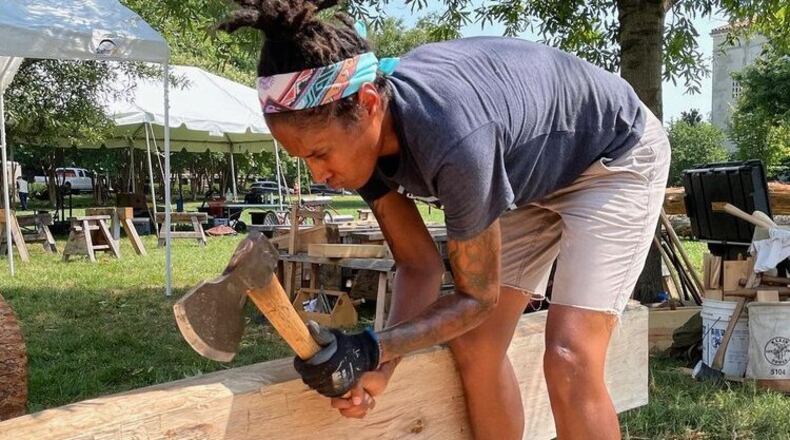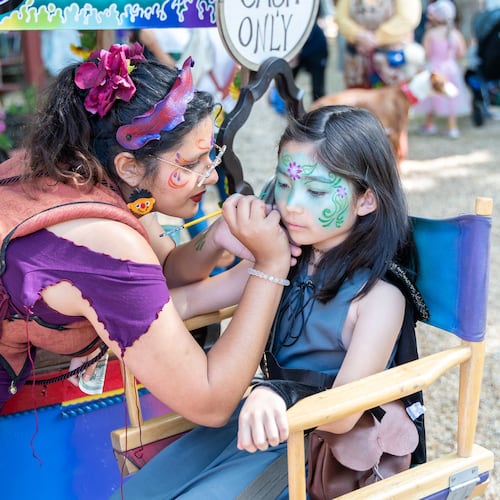Thirteenth-century carpenters used axes to cut and shape the timbers for the roof of the Notre Dame Cathedral.
Built with the mortise-and-tenon technique, those timbers lasted for 800 years, until a fire destroyed most of the cathedral’s roof in April 2019.
When the city of Paris planned restoration of the cathedral, there was debate about using modern design. The French National Assembly resolved that question, and took steps to assure that the repairs matched the historic structure.
In solidarity with the effort to restore the Parisian cathedral, Handshouse Studio, a Massachusetts-based non-profit, has created an immersive history lesson, coaching volunteers in this ancient craft.
Credit: Handshouse Studio
Credit: Handshouse Studio
Students learned the technique by creating a replica of a truss from the cathedral’s roof, using detailed plans from the architects in charge of the restoration, Rémi Fromont and Cédric Trentesaux.
That triangular truss, composed of a 47-foot lower span and 38-foot rafters, was carved by hand from white oak trees harvested near Lexington, Virginia.
The timbers were fitted together with wooden pegs and hand-carved slots. The three-ton truss went on tour, exhibited at the Smithsonian Institution, Catholic University, and the National Building Museum in Washington, D.C. On March 7 it came to an outdoor terrace at the Millennium Gate Museum at Atlantic Station, here in Atlanta.
On Monday, April 25, the truss will go off exhibit and return to Lexington. But throughout the day Sunday, April 24, there will be workshops, lectures and the opportunity to grab a rope and participate in a “truss raising.”
“We are an educational non-profit that does hands-on learning as a way of understanding history and material culture,” said Marie Brown, executive director of Handshouse.
Credit: Handshouse Studio
Credit: Handshouse Studio
“It’s a way of understanding how and who and why Notre Dame was made the way it was made,” she said.
A group called Charpentiers Sans Frontières (Carpenters Without Borders) demonstrated these same techniques during a July 2020 workshop in France, in an effort to show that traditional methods were still viable.
A few of those who RSVP at this Handshouse site will be able to swing an axe and shape a timber during a mid-day workshop at the museum.
From 3-5 p.m. Sunday there will be demonstrations by traditional carpenters, scholars and architects and at 4 p.m. a traditional “truss raising” using ropes and many hands. At 5 p.m. there will be a presentation on the entire project.
Handshouse has a unique way of teaching history. “We start with an object,” says the organization. That object might be a Polish synagogue, or a gourd banjo or a Colonial-era submarine. Then, with scholarship and volunteers, they pursue building that object, and learning about the world that produced it.
The AJC wrote about Handshouse when a documentary of their wildly-painted 17th-century Polish wooden synagogue project was part of the Atlanta Jewish Film Festival. (Handshouse co-founders Rick and Laura Brown are both University of Georgia graduates.)
Handshouse will offer the truss to France as part of the Notre Dame restoration effort as “a global gesture,” said Laura Brown. “We all feel we lost something when the Notre Dame burned.”
The event is free though a donation is suggested. The Millennium Gate Museum at Atlantic Station is at 395 17th St. For more information and to register go to Handshouse.org.
About the Author
The Latest
Featured





